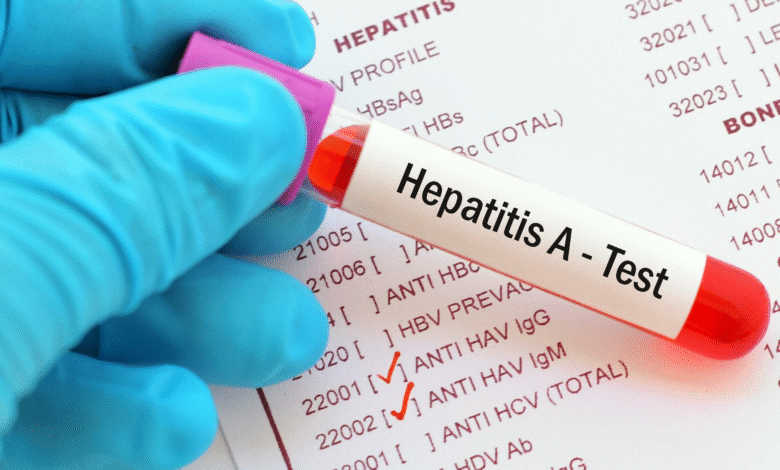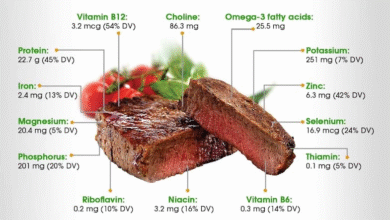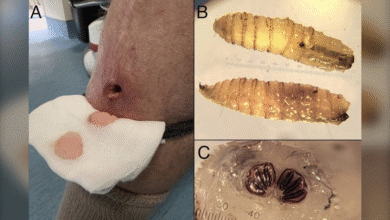Hepatitis A Outbreak: What Travelers Need to Know

The recent hepatitis A outbreak has raised urgent health concerns, particularly in popular European travel destinations such as Austria, the Czech Republic, Hungary, and Slovakia. With over 2,000 hepatitis A cases reported since January 2025, the risk of infection has escalated among travelers and local communities alike. Health experts emphasize the importance of preventing hepatitis A through vaccination, especially for those who haven’t been immunized or previously infected. Symptoms of hepatitis A can vary, but include fatigue, fever, nausea, and jaundice, making awareness critical for early detection and care. As the outbreak progresses, health authorities are working diligently to understand transmission routes and increase vaccination for hepatitis A to protect vulnerable populations.
The ongoing surge of hepatitis A cases across several European nations highlights a significant public health threat. This viral infection, linked to unsanitary conditions and poor hygiene practices, can have dire consequences, especially for those aged 40 and above. The alarming rise in infections calls for immediate action in areas that lack adequate healthcare access. Ensuring proper education about the symptoms of this viral disease and the efficacy of preventive measures, such as vaccination for hepatitis A, is essential. As communities grapple with this outbreak, comprehensive strategies targeting high-risk groups will be vital in curbing the spread of this illness.
Understanding the Recent Hepatitis A Outbreak in Europe
The hepatitis A outbreak that has recently escalated in several European countries is alarming health officials and travelers alike. Reports from the European Centre for Disease Prevention and Control (ECDC) indicate that over 2,000 cases of hepatitis A have emerged in Austria, the Czech Republic, Hungary, and Slovakia, causing both illness and fatalities. The ongoing situation underscores the critical need for public awareness and preventive measures against viral infections in Europe, where outbreaks can spread rapidly due to travel and food handling practices.
In Slovakia, the situation is particularly severe, with a significant number of cases stemming from an existing outbreak since 2022. The Czech Republic has also reported a concerning number of cases and deaths. As the numbers continue to rise, understanding the nature of hepatitis A, its transmission routes, and potential risks is essential for the general public and healthcare providers.
Key Symptoms and Risk Factors Associated with Hepatitis A
Individuals infected with hepatitis A often experience a range of symptoms, including fatigue, fever, nausea, and jaundice. While some may not exhibit symptoms at all, those who do can face severe discomfort. Symptoms typically manifest within 15 to 50 days post-exposure, highlighting the importance of vigilance among travelers and those within high-risk groups. It is crucial to recognize these signs early for prompt medical attention and to prevent further transmission of the virus.
The risk of contracting hepatitis A is notably higher among vulnerable populations, such as the homeless or those living in unsanitary conditions. Individuals over 40 years old face an increased severity of illness, as do those with pre-existing liver conditions. Awareness of these risk factors can help in strategizing preventive measures and targeting vaccination efforts effectively.
Preventing Hepatitis A: Vaccination and Safety Measures
Preventing hepatitis A is achievable through vaccination and improved personal hygiene. The hepatitis A vaccine, recommended for travelers heading to endemic regions, is administered in two doses, effectively providing long-lasting immunity. Health experts emphasize that vaccination is particularly essential for high-risk groups who are more likely to be exposed to the virus due to lifestyle or living conditions.
In addition to vaccination, practicing good hygiene—such as thorough handwashing and ensuring food safety—can significantly reduce the risk of contracting hepatitis A. Public health campaigns aimed at educating travelers about these preventive measures are vital in curbing the recent outbreak and minimizing future cases of hepatitis A.
The Importance of Vaccination in Outbreak Response
As the hepatitis A outbreak grows, vaccination emerges as a primary tool in public health responses. Vaccination programs need to be rapidly deployed in at-risk areas to curtail the spread of the virus. Health authorities recommend targeted vaccination especially among travel-associated scenarios and communities where infections are prevalent, underscoring the role of proactive measures in outbreak management.
Healthcare providers play a pivotal role in ensuring that those at risk are informed about the importance of receiving the hepatitis A vaccine. Public health initiatives that disseminate information on vaccination availability and promote access can lead to improved immunization rates, thereby protecting not only individual health but also the broader community.
Addressing Hepatitis A Cases: Public Health Recommendations
In response to the rising hepatitis A cases, the ECDC has laid out specific recommendations aimed at mitigating the outbreak’s impact. Investigating potential transmission routes is essential, with a focus on identifying whether foodborne transmission is a contributing factor. Such investigations help in tailoring public health responses to effectively combat the spread of the virus.
Additionally, implementing targeted vaccination campaigns, alongside post-exposure prophylaxis for close contacts, can significantly lower the risk of further infections. Public awareness campaigns emphasizing hygiene and vaccination can also help educate high-risk populations about the necessity of protective measures against hepatitis A.
Educational Initiatives to Combat Hepatitis A
Education is a key component in addressing the hepatitis A outbreak, particularly in vulnerable communities. Health organizations must prioritize outreach efforts to ensure that those at highest risk are informed about the symptoms, transmission routes, and preventive strategies relevant to hepatitis A. Workshops that provide information on food safety and personal hygiene can empower individuals to take steps to protect themselves from infections.
Furthermore, collaboration with local community leaders can enhance the effectiveness of educational initiatives. By tailoring messages to resonate with the specific concerns of affected populations, healthcare providers can foster a better understanding of hepatitis A and motivate individuals to seek vaccination and adopt safer practices.
Signs of Hepatitis A: What You Should Know
Understanding the signs and symptoms of hepatitis A is crucial for early detection and treatment. Common symptoms include abdominal pain, nausea, fatigue, and fever, with some individuals experiencing dark urine or jaundice. Being aware of these symptoms can help individuals recognize a potential infection sooner, leading to timely medical intervention and reducing the risk of spreading the virus to others.
Awareness campaigns that highlight these symptoms can aid in educative outreach, particularly in regions with ongoing hepatitis A outbreaks. By empowering the public with knowledge regarding the signs of hepatitis A, health organizations can help delay or diminish the outbreak’s transmission.
Hepatitis A Vaccination: Guidelines and Recommendations
Receiving the hepatitis A vaccine is vital for individuals traveling to regions identified as experiencing outbreaks. The CDC recommends vaccination for children aged one year and older, as well as for adults who may be at greater risk of exposure. It is essential to follow the vaccination schedule to ensure the best protection against hepatitis A.
Healthcare providers must remain vigilant, not only in promoting hepatitis A vaccination but also in making it accessible to high-risk populations. Understanding the guidelines and ensuring compliance with vaccination schedules can bolster public health efforts to manage and prevent hepatitis A outbreaks effectively.
The Role of Hygiene in Preventing Hepatitis A
Good hygiene practices are critical in preventing the spread of hepatitis A, a disease primarily transmitted through contaminated food and water. Regular handwashing, especially after using the restroom and before handling food, significantly reduces the risk of infection. Health officials stress that ensuring safe food practices is particularly important in areas currently experiencing outbreaks.
Public health campaigns aimed at educating communities on hygiene can profoundly impact preventing hepatitis A. By promoting good sanitation and hygiene, health authorities can lessen the spread of the disease and protect vulnerable populations from future outbreaks.
Community Support and Resources for Hepatitis A Prevention
Community support is essential during outbreaks such as the current hepatitis A situation in Europe. Local health organizations can provide resources, including vaccination clinics, education on symptoms and prevention, and guidance on how to enhance personal hygiene practices. Establishing these community touchpoints can ensure that individuals have access to crucial information and services during urgent health crises.
Additionally, collaboration with local governments can lead to more significant public health initiatives that address the root causes of hepatitis A outbreaks, particularly in vulnerable communities. By leveraging community resources, health officials aim to implement effective strategies that safeguard public health and reduce the impact of hepatitis A cases.
Frequently Asked Questions
What are the current hepatitis A outbreak trends in Europe?
The recent hepatitis A outbreak has particularly affected Austria, the Czech Republic, Hungary, and Slovakia, with over 2,000 cases reported between January and May 2025. Slovakia has the highest number, accounting for 880 cases, followed by the Czech Republic with 600 cases and Hungary with 530 cases. These hepatitis A cases are linked to viral infections in Europe that have caused serious health concerns.
How can individuals prevent hepatitis A during the outbreak?
Preventing hepatitis A during the outbreak involves ensuring good hygiene practices, avoiding contaminated food and water, and most importantly, getting vaccinated for hepatitis A. The vaccine is administered in two doses and is crucial in protecting individuals, particularly those in high-risk groups.
What are the symptoms of hepatitis A to watch out for during the outbreak?
Symptoms of hepatitis A can include fatigue, fever, joint pain, nausea, loss of appetite, and abdominal pain. Some individuals may also experience jaundice, dark urine, or clay-colored stools. Being aware of these symptoms is essential, especially during the current hepatitis A outbreak.
Who is most at risk during the hepatitis A outbreak?
Groups most affected by the hepatitis A outbreak include individuals who are homeless, those who use or inject recreational drugs, and those living in unsanitary conditions. The risk is especially high for adults over 40 and those with existing liver conditions, making vaccination critical for these populations.
What is the importance of vaccination for hepatitis A amid the current outbreak?
Vaccination for hepatitis A is crucial in light of the ongoing outbreak, as it provides immunity against the virus. The vaccine is effective when administered within two weeks of potential exposure, making it a vital tool in public health strategies to combat rising hepatitis A cases in Europe.
What steps are health authorities taking to control the hepatitis A outbreak?
Health authorities, including the ECDC, are taking several steps to control the hepatitis A outbreak. These include investigating transmission routes, implementing targeted vaccination programs, providing education to high-risk groups, and offering post-exposure prophylaxis to close contacts of confirmed cases.
How does hepatitis A spread and what implications does this have during the outbreak?
Hepatitis A primarily spreads through contaminated food and water, or close contact with infected individuals. Given the current outbreak, understanding transmission methods is necessary for implementing effective public health strategies to reduce the spread of hepatitis A cases.
| Country | Total Cases | Deaths |
|---|---|---|
| Austria | 87 | 0 |
| Czech Republic | 600 | 6 |
| Hungary | 530 | 0 |
| Slovakia | 880 | 0 |
Summary
The hepatitis A outbreak that has emerged across Austria, Czech Republic, Hungary, and Slovakia has raised significant public health concerns, as thousands of travelers have been affected. This recent surge in cases, totaling 2,097 infections, highlights the importance of vaccination, particularly among vulnerable populations. To combat the outbreak effectively, health authorities must enhance their vaccination efforts and improve sanitary conditions in high-risk areas.




